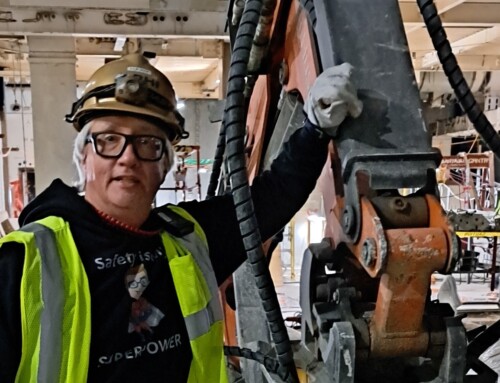It was a pleasant surprise when I gave five talks at Southern Ohio Medical Center (SOMC), and the company’s CEO Randy Arnett attended all five talks! Most times top executives give a “state of the company” talk and then hit the road. Every now and again, someone like Randy sticks around. (Though not for five talks on the same topic!) It’s a sign the person is an exceptional leader.
I don’t know if Randy learned anything from me, but he was a pleasant addition to each session. What I do know is that it made a difference to the other SOMC employees in the room that Randy was there during my talks. (Fortune magazine voted SOMC one of the “100 Best Companies to Work For” and I could tell during my two-day stay that Randy was well-admired and an exceptionally influential leader.)
The lesson for you and me: you’ve got to show that something is important to you, not just say it is. (The well-worn but still true “walk the talk” concept.) The best way to do that is to put in the time. You see if you want to know how important something is to a person just find out how much time they spend on it. If you golf a couple of times a week whenever the weather lets you (or if you golf no matter what the weather!), then golfing is important to you. Likewise with your job as a safety leader, people need to see you, to interact with you, to know that you are happy to spend time with them in the field and that you care about them.
If you spend most of your time crunching numbers, making charts and sitting at your desk working on your computer even when you don’t have to, then that’s what folks that work with you (and rely on you) will think is important to you.
Here are two tips to help employees know you care about them as people more than you care about the statistics:
1) Learn about everyone you can. Everyone! Take the time to learn about every employee you interact with. If you hired me to help with your safety culture, learning about your employees would be one of the first things I would do. “But I don’t have the time!” you may proclaim. Then fix that. When I was a safety professional at construction sites and nuclear facilities I consistently spent time learning about the people on the site–what their hobbies were, how many children they had and what else was going on in their life. It made me a better safety leader and a more powerful person.
2) Be positive most of the time. When a work crew sees you coming, are they glad about it or do they think “oh no here comes that pesky safety guy/gal again.” You should be a pleasant, helpful and emotionally positive addition to your worksite. Safety is a serious business of course, but it is also an upbeat, positive business because it’s about helping people live pain-free and healthy lives. Sure, on occasions you’ve got to discipline a person or crew because they’ve been negligent, but not most of the time. When I visit a work site I look for ways to be helpful first not to find fault.
Our business is about people, about helping people. That’s why you’ve got to “put in the time” to show employees you care about them.





